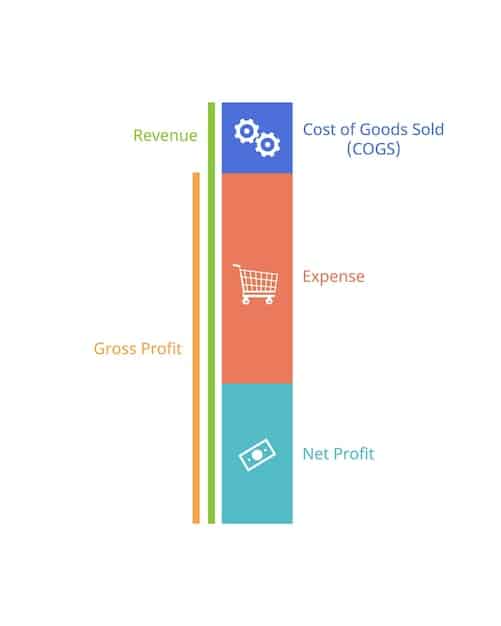US E-commerce Platform Pricing: Are You Overpaying?

US e-commerce platform pricing can vary significantly, and many businesses may unknowingly overpay by as much as 20% compared to industry averages due to hidden fees, inadequate feature utilization, or simply not shopping around for better deals.
Are you sure you’re getting the best deal on your e-commerce platform? Many US businesses are unknowingly overpaying. Let’s dive into whether you’re overpaying on US e-commerce platform pricing by 20% more than the industry average, and how to optimize your costs.
Understanding the Landscape of US E-commerce Platforms
The US e-commerce market is booming, with numerous platforms vying for your business. Understanding the different platform options is the first step to determining if you are paying a fair price and saving money on your existing e-commerce platform.
Before diving into pricing, let’s consider the key players and factors influencing costs.
Popular E-commerce Platforms in the US
The US e-commerce landscape is dominated by a few major players, along with a host of smaller, niche-focused platforms. Each caters to different business sizes and needs.
- Shopify: A popular choice for businesses of all sizes, offering a user-friendly interface and extensive app ecosystem.
- WooCommerce: A flexible, open-source platform built on WordPress, ideal for businesses seeking customization.
- BigCommerce: An enterprise-level platform with robust features for high-volume sales and complex operations.
- Squarespace: Known for its design-centric approach, popular among creatives and small businesses.
- Wix: A drag-and-drop website builder also offering a complete e-commerce solution for small to mid-sized businesses.
These platforms also offer different payment schedules that fit a variety of different needs.
Choosing the right platform depends on your business size, technical expertise, and specific needs. Understanding the strengths and weaknesses of each is essential for making an informed decision and saving money.

Decoding E-commerce Platform Pricing Models
E-commerce platforms employ diverse pricing models, each impacting your bottom line differently. Familiarizing yourself with these models is crucial for effective cost management.
Understanding fees and costs is essential when it comes to managing the budget on your e-commerce business.
Transaction Fees and Hidden Costs
Transaction fees are charges levied on each sale made through the platform. These fees vary depending on the platform and your chosen payment gateway.
Hidden costs are additional expenses that aren’t immediately apparent. These may include:
- App and Plugin Costs: Many platforms rely on third-party apps and plugins for essential functionality, adding to your monthly expenses.
- Payment Gateway Fees: Payment gateways like Stripe or PayPal charge their own transaction fees, which can eat into your profits.
- SSL Certificate Costs: An SSL certificate is essential for secure online transactions and may incur an annual fee.
- Theme Customization Costs: Customizing your store’s theme to match your brand may require hiring a designer or developer.
By carefully evaluating each platform’s pricing structure and potential hidden costs, you can make a sound decision that fits your business’ needs.
Understanding how you are charged and the best payment gateway for your business can help keep costs down.
Benchmarking: Are You Overpaying?
To determine if you’re overpaying for your e-commerce platform, it’s essential to benchmark your costs against industry averages. Start by calculating your total monthly expenses on your e-commerce platform.
Let’s explore the strategies for accurate benchmarking and cost evaluation.
Calculating Your E-commerce Platform Costs
Begin by listing all the expenses associated with running your platform, including:
- Monthly Subscription Fees: The base cost of your platform subscription.
- Transaction Fees: Charges levied on each sale.
- App and Plugin Costs: Expenses for any third-party apps or plugins you use.
- Payment Gateway Fees: Fees charged by your payment gateway provider.
Once you have a comprehensive list of your expenses, calculate your total monthly costs. Understanding this total is essential to determining if you are spending too much.
Comparing these expenses to industry averages helps reveal whether you are overpaying for your business’ e-commerce platform.

Strategies for Negotiating Better Deals
Negotiating with e-commerce platform providers can be a surprisingly effective way to reduce your costs. Many platforms are willing to offer discounts or customized packages to attract and retain customers.
Let’s analyze proven tactics for savvy negotiation and cost savings.
Leveraging Your Business Size and Volume
Highlight your business size and sales volume as leverage in negotiations.
Consider these tactics:
- Negotiate Volume Discounts: If you process a significant volume of transactions, negotiate a discounted transaction fee rate.
- Commit to a Longer Contract: Platforms often offer lower monthly rates in exchange for a longer-term commitment.
- Bundle Services: If you use multiple services from the same platform, negotiate a bundled discount.
By proactively engaging with platform providers and leveraging your business’s attributes, you can secure more favorable pricing terms.
Negotiating can be daunting, but the potential savings make it worth your while.
Optimizing Your Platform Usage
Optimizing your e-commerce platform usage is just as crucial as negotiating better deals. Many businesses underutilize the features and resources available to them, leading to unnecessary expenses.
Let’s explore the strategies for maximizing platform functionality to reduce costs.
Utilizing Built-In Features and Avoiding Redundancy
Many platforms offer a range of built-in features that can replace costly third-party apps. Before investing in new apps, explore your platform’s existing capabilities.
Consider these optimization tips:
- Leverage Built-In Marketing Tools: Many platforms offer email marketing, SEO tools, and social media integration.
- Utilize Native Analytics: Track your store’s performance using the platform’s built-in analytics tools.
- Optimize Product Listings: Ensure your product listings are clear, concise, and optimized for search engines.
By exploring, employing and understanding your platform’s basic functionalities, you can avoid the need to pay to use a third party service.
Optimizing can also lead to increased efficiency and an improved customer experience.
The Long-Term Impact of Platform Choice
The e-commerce platform selected in the initial stages of one’s career will have a lasting impact on the trajectory of success for any business. As time goes on, the selection of your platform should become more aligned with the scalability of your long term vision.
The platform selected years ago might not have the same value that it once held, even if the business owner has grown accustomed to the software and UI.
Reflecting on if Your Current Platform is Still the Right Fit
The future of e-commerce is dynamic, with new technologies and trends constantly emerging. Your platform should adapt to accommodate these changes.
When considering if a new platform is necessary for your business, consider these items:
- Is your current platform aligned with your current long-term vision?
- Does your platform provide all necessary marketing features?
- How effective is your platform for SEO and lead generation?
Regularly evaluate your platform’s performance, scalability, and cost-effectiveness to ensure it aligns with your evolving business needs. Ignoring these factors can lead to missed opportunities and increased expenses.
| Key Point | Brief Description |
|---|---|
| 💰 Pricing Models | Understand subscription, transaction, and hidden fees. |
| 📊 Benchmarking | Compare your costs against industry averages to see if you overpay. |
| 🤝 Negotiation | Negotiate better deals by leveraging business size and sales volume. |
| ✨ Optimization | Use built-in features and cut redundancies to reduce costs. |
FAQ
The most common models include subscription-based pricing, transaction fee-based pricing, and hybrid models that combine both. Some platforms also offer usage-based pricing.
Add up all the expenses related to your platform, including subscription fees, transaction fees, app costs, payment gateway fees, and any other related expenses for an accurate cost calculation.
Hidden costs include app and plugin costs, payment gateway fees, SSL certificate costs, and theme customization costs. Keep an eye out for any extra charges or non-obvious fees!
You should review your e-commerce platform costs at least once a year. Re-evaluate pricing structure as your business grows or as new features are added for your needs.
You can negotiate better deals by leveraging your business size and volume, committing to longer contracts, and bundling services. Communicate with the platform providers and be proactive!
Conclusion
Navigating the complexities of US e-commerce platform pricing requires a thorough understanding of available platforms, pricing models, and optimization strategies. By carefully benchmarking your costs, negotiating better deals, and maximizing platform usage, you can ensure you’re not overpaying and that your e-commerce operations are cost-effective.





